
Anyone can suffer the consequences of an overheated car engine. You could become stranded in the middle of the road due to different issues, including a leak in one of the coolant hoses or a problem with the cooling fan in the radiator. In most situations of engine overheating, the fault lies with the car's engine cooling system.
Engine cooling system
The internal combustion engine is a heat engine used by most automobiles, regardless of whether they run on gasoline or diesel (ICE). Cylinders can be found within the engine block of an ICE vehicle. Because of the high temperature, the gases within these cylinders expand, which causes the pistons to move. Power is produced by the movement of pistons within these cylinders, which causes the crankshaft to rotate and move in a reciprocating motion. Consequently, the engine would produce a significant amount of heat sooner rather than later.
We need to come up with a solution to the problem of the car engine producing an excessive amount of heat for it to function properly. A cooling system for a car's engine is the ideal companion for completing this task. There is no way around a reliable engine cooling system that is in good functioning order is necessary for a respectable automobile engine. So let us get to the main question. How does the cooling system for the engine function?
To begin, let's look at the myriad of parts that come together to form the cooling system in a vehicle.
Radiator
The temperature of the coolant circulating through the radiator is the major responsibility of the radiator. This piping-hot fluid originates from the vehicle's engine. The heat generated by the coolant is transferred to the surrounding air via the radiator, which has a large surface area.
Thermostat
The Thermostat has the most influence in regulating the flow of coolant to the engine. When an engine is idling or is at a normal operating temperature, the main valve of the Thermostat will be closed.
Coolant
It is antifreeze that has been diluted. The primary component of antifreeze is ethylene glycol, which is combined with water. In comparison to water, coolant has a lower freezing point. If water is utilised as the coolant instead of coolant, then on cold days, the water will freeze, expand, and cause the engine to experience wear and tear.
Coolant Temperature Sensor/Switch
The ECT sensor does exactly what it claims to do: detect the temperature of the coolant in the system. We are given an idea as to whether or not the engine is releasing an excessive amount of heat.
Water/Coolant Pump
For the water pump to function properly, it must be connected to the engine. It circulates the antifreeze solution throughout the vehicle's engine cooling system.
Expansion tank
An expansion tank may be found in the vast majority of the vehicles. The coolant expansion tank keeps the system's pressure under control. In addition to that, it assists in releasing the pressure that has built up within the radiator.
How does the engine cooling system of a car work?
In general, the Thermostat is a control mechanism. Aside from air temperature, the Thermostat can also measure coolant temperature. The coolant temperature would be appropriate when you first turn on the engine. For this reason, the coolant would bypass the radiator and go straight to the engine via the bypass valve (circumventing the radiator altogether). This triggers the engine's operation and will begin to heat up shortly after that. The engine coolant would also be affected. As the coolant temperature increases, the Thermostat's bypass valve will close, allowing the main valve to open. Now the hot fluid needs to reach the radiator where it can be cooled.
Radiators are designed to remove excess heat from cooling systems by dissipating it into the surrounding air. The hot liquid would go down the main radiator line and via the Thermostat's primary valve to get to the radiator. At the same time, the engine receives a recirculation of the coolant that has been sitting in the radiator.
Why Is Engine Overheating
To keep your car at a safe temperature, several components work together. The system's integrity is compromised if even a single part fails. It will eventually depreciate, just like any other system. The engine might overheat and cause much trouble if the cooling system isn't working properly.
Some potential issues with the engine's cooling system are as follows:
Fluids leaking
Numerous pipes and valves distribute the antifreeze solution throughout the cooling system. Any cracks or fractures in them could cause coolant to escape and the engine to overheat. You can perhaps detect this by following any sugary aromas toward the car's front end.
You might have to refill
The system's coolant level may decrease. To put it bluntly, this can cause issues. However, after adding more coolant, the engine temperature should return to normal. Just make sure you apply the correct antifreeze ratio for your vehicle. Moreover, it would help if you didn't use a different antifreeze or the inappropriate water ratio to antifreeze. In either situation, you may expect future engine problems.
Something off with the Thermostat
Your car's Thermostat may have been damaged. A faulty thermostat might prevent coolant from reaching the engine or circulating through the radiator. As a result, the engine is doomed to overheat.
Radiator fan
An issue with the radiator fan's connection to the coolant temperature sensor is possible. The radiator fan may be malfunctioning as a result. Sooner or later, the engine would overheat.
A dirty water pump.
The failure of either the water or coolant pumps could have resulted from various factors. A buildup of residue in the pump may impede the circulation of the coolant throughout the system. Inadequate coolant circulation will lead to engine overheating.
Conclusion
If your car's temperature gauge indicates the engine is overheating, you should pull over immediately. In addition, if you see warning indicators like smoke emerging from the engine compartment and choose to keep driving, you risk significant engine devastation. The best action would be to get the engine checked out at a service centre.










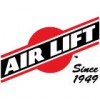











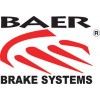



















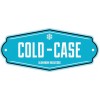
































































































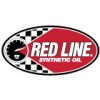









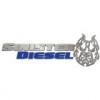




















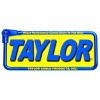






















1 Comment(s)
1
1
Leave a Comment